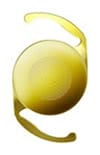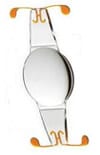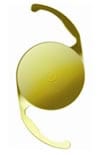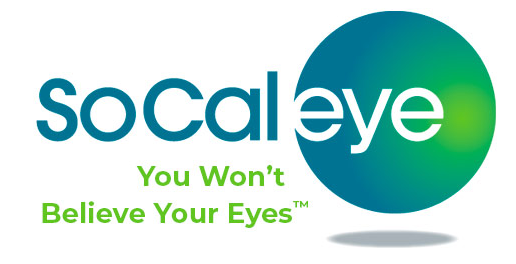
Choosing an IOL that is right for you. More than 25 million Americans have cataracts and nearly 4 million Americans undergo cataract surgery each year to restore their vision. Cataract Surgery has become one of the most common surgical procedures performed in the US. During cataract surgery, the SoCal Eye Surgeon will remove the clouded lens and replace it with an artificial lens called an intraocular lens (IOL).
It is important for a patient to understand that there are a variety of IOL types to choose from — all with different benefits. This is the one and only time in our lives to customize our vision and there are many exciting options. Choosing the right IOL is an important discussion and rest assured that your SoCal Eye Surgeon will spend time during the consultation to answer questions and ensure that a patient makes an informed decision that best fits your budget and your lifestyle.
Different types of lenses for cataract surgery.
- Monofocal IOL: Used for almost 50 years and are the most commonly prescribed IOL’s today. The implant can be set at one fixed distance to provide best-corrected vision at near, intermediate OR far distances. Most people have their IOLs set for distance vision and use reading glasses for near activities.
- MultiFocal IOL: Have multiple corrective zones built into the lens which allows a person to see both near, intermediate, and far objects. They work by focusing both distances simultaneously onto the retina. The brain is able to adapt and allow only the desired image to be clear.
- Toric IOL: Have extra built-in correction for astigmatism. These can also be focused at near, intermediate, or far, providing for glasses-free sight in these area.



Considerations for Choosing the Right IOL.
Affordability?
Cataract Surgery is considered to be a medically necessary procedure and most medical insurance plans, including Medicare, will cover the clinical costs associated with Cataract Surgery. The covered costs include a Monofocal implant only. Premium lenses are considered to be ‘elective’ and are generally not covered. Price of these premium lenses can range from $2000 – $3000 per eye. The one time cost of an upgraded implant can save patients thousands of dollars in the future as glasses costs will either be minimal or non-existed.
The out of pocket expenses are a consideration and are often a part of the IOL decision.
Eyeglasses?
A Monofocal lens implant provides excellent vision after cataract surgery, but only at one set distance (usually for seeing things at a distance). When focused at distance, these lenses work well for seeing distant signs when driving, going to a movie, or watching TV. Monofocal lens implants will require usage of glasses for any type of near vision activity, like reading, knitting, sewing, playing cards, or using a computer. You may also need glasses for distance, especially if you have astigmatism.
SoCal Eye Doctors may present the idea of ‘Monovision’ using Monofocal IOLs. This technique is where one lens is to set for near vision and the other is set to distance vision. The brain adapts and can synthesize the information from both eyes to provide adequate vision at all distances and can reduce or eliminate the need for eyeglasses. This works best if patients who have a prior history of monovision contact lens use.
Multifocal implants can largely eliminate the need for eyeglasses most of the time so that patients can see clearly at near, intermediate, and far distances without the use of glasses most of the time.
Night Driving?
Night driving is the typically the first time patients notice decreased vision due to their cataracts. Often time patients notice significant glare and halo. Cataract surgery can significantly reduce these symptoms, however for a very small amount of patients, a minimal amount of glare and halo persist following surgery, regardless of implant type. The good news is that most people adapt to these effects, and enjoy improved vision and freedom to drive at night.
Astigmatism?
Cataract patients with moderate to high astigmatism are usually happier with toric IOLs. With astigmatism, the cornea (the clear, front window of the eye) is not uniformly curved like a basketball, but is shaped more like a football. One curve is longer than the other. This distorts both near and distant objects and monofocal implants are unable to correct this abnormality in vision. Fortunately, toric implants correct for distance and astigmatism so patients can be glasses free at their chose area of sight, either near, intermediate, or distance.
Glaucoma and other eye conditions?
For people with vision loss from glaucoma, macular degeneration or other eye diseases, your surgeon will help chose the most appropriate implant choice for your eye. In certain situations, multifocal and are not recommended.
SoCal Eye – Intraocular Lens Implants, Long Beach
Choosing an IOL that is right for you. There are multiple intraocular lens implants available, each with their own unique advantages. Rest assured that the SoCal Eye vision care team will do its best to educate each patient so that an informed decision can be made as to which option will be the best fit per patient. At SoCal Eye, we are pleased to offer all options to ensure our patients have every opportunity to benefit from the choices available—and to choose the option that is best for their anatomy and their lifestyle.
All treatment begins with a Consultation with a SoCal Eye Cataract Specialist or Cataract Surgeon in Long Beach. For Cataract Treatment in Long Beach, Schedule an Appointment today at LAKEWOOD (562) 531-2020 | LOS ALAMITOS (562) 598-7728 or send us an Online Consultation Request



